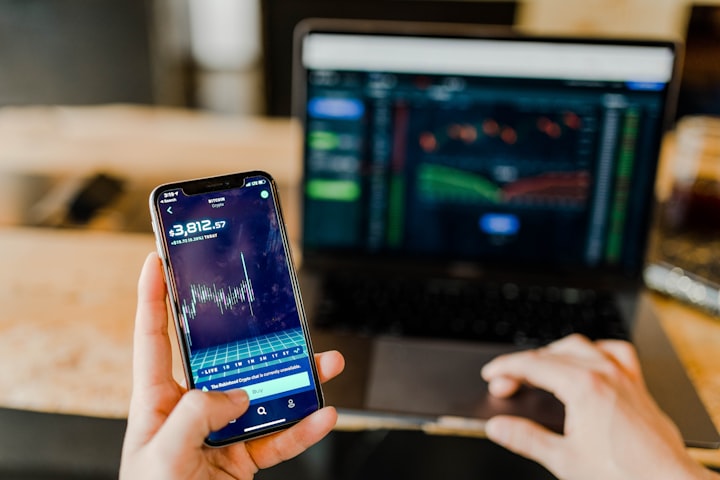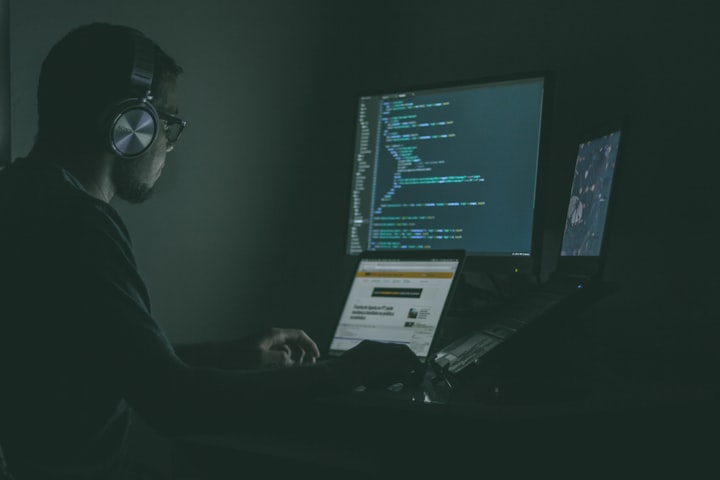Everything you Need to Know About Trading in Binance Futures
Learn Trading in Binance

If you are thinking of starting to trade on Binance then in my opinion the most profitable option is trading Futures. But, this option also comes with high risk so take responsibility into your own hands. I’ll gather in this article every information you need to know about trading in Binance Futures contracts.
What is a futures contract?
A futures contract is an agreement to buy or sell a commodity, currency, or another instrument at a predetermined price at a specified time in the future. The trades here are not settled immediately, instead, two counterparties will trade a contract that defines the settlement at a future date.

A futures market doesn’t allow users to directly purchase or sell the commodity or digital asset. Instead, they are trading a contract representation of those, and the actual trading of assets will happen in the future when the contract is exercised.
What is a perpetual futures contract?
A perpetual contract is a special type of futures contract, but unlike the traditional form of futures, it doesn’t have an expiry date. For example, you can hold a position for as long as you see it as reasonable or when you think the profit or loss is enough. The trading of perpetual contracts is based on an underlying Index Price. The Index Price consists of the average price of an asset, according to major spot markets and their relative trading volume.
Learn the basic components
If you are serious about trading you should take it really seriously and study thoroughly that’s why you have to have an understanding of the basic components that are required for you to look at when trading.
Initial margin is the minimum value you must pay to open a leveraged position. For example, you can buy 1000 BNB with an initial margin of 100 BNB (at 10x leverage). So your initial margin would be 10% of the total order. The initial margin is what backs your leveraged position, acting as collateral.

The maintenance margin is the minimum amount of collateral you must hold to keep trading positions open. If your margin balance drops below this level, you will either receive a margin call (asking you to add more funds to your account) or be liquidated. Most cryptocurrency exchanges will do the latter. With Binance they send a notification to your phone when you are close to getting liquidated or losing your contract and there you have time to do your adjustments or leave it at that if you believe. But, there is no notification else when u drop below the maintenance margin you immediately lose all your funds.
The funding rate consists of regular payments between buyers and sellers, according to the current funding rate. When the funding rate is above zero (positive), traders that are long (contract buyers) have to pay the ones that are short (contract sellers). In contrast, a negative funding rate means that short positions pay longs. On the Binance futures market, the interest rate is fixed at 0.03%, and the premium varies according to the price difference between futures and spot markets. Binance takes no fees for funding rate transfers as they happen directly between users.
PnL stands for profit and loss, and it can be either realized or unrealized. When you have open positions on a perpetual futures market, your PnL is unrealized, meaning it’s still changing in response to market moves. When you close your positions, the unrealized PnL becomes realized PnL either partially or entirely.
Because the realized PnL refers to the profit or loss that originate from closed positions, it has no direct relation to the mark price, but only to the executed price of the orders. The unrealized PnL, on the other hand, is constantly changing and is the primary driver for liquidations. Thus, the mark price is used to ensure that the unrealized PnL calculation is accurate and just.
To avoid spikes and unnecessary liquidations during periods of high volatility, Binance Futures uses Last Price and Mark Price.
Mark Price is an estimate of the true value of a contract when compared to its actual trading price (last price). The mark price calculation prevents unfair liquidations that may happen when the market is highly volatile.

So while the Index Price is related to the price of spot markets, the mark price represents the fair value of a perpetual futures contract. On Binance, the mark price is based on the Index Price and the funding rate, and it is also an essential part of the “unrealized PnL” calculation.
The Last Price is easy to understand. It means the Last Price that the contract was traded at. In other words, the last trade in the trading history defines the Last Price. It’s used for calculating your realized PnL (Profit and Loss).
What order types are available and when to use them?
Binance futures offer a variety of order choices when trading futures contracts. Let’s look at them individually and get an understanding of how they work.
Limit: A limit order is an order that you place on the order book with a specific limit price that is determined by you. When you place a limit order, the trade will only be executed if the market price reaches your limit price or better. Therefore, you may use limit orders to buy at a lower price or to sell at a higher price than the current market price.
Market: A market order is an order to buy or sell at the best available current price. It is executed against the limit orders that were previously placed on the order book. When placing a market order, you will pay fees as a market taker.
Stop-Limit: The easiest way to understand a stop-limit order is to break it down into stop price, and limit price. The stop price is simply the price that triggers the limit order, and the limit price is the price of the limit order that is triggered. This means that once your stop price has been reached, your limit order will be immediately placed on the order book.
Stop-Market: Similarly to a stop-limit order, a stop-market order uses a stop price as a trigger. However, when the stop price is reached, it triggers a market order instead.
Take-Profit-Limit: If you understand what a stop-limit order is, you will easily understand what a take-profit-limit order is. Similarly to a stop-limit order, it involves a trigger price, the price that triggers the order, and a limit price, the price of the limit order that is then added to the order book. The key difference between a stop-limit order and a take-profit-limit order is that a take-profit-limit order can only be used to reduce open positions.
Take-Profit-Market: Similarly to a take-profit-limit order, a take-profit-market order uses a stop price as a trigger. However, when the stop price is reached, it triggers a market order instead.
Exit strategies for futures contracts
After taking a futures contract position, there are three main actions that futures traders can perform:
Offsetting: refers to the act of closing a futures contract position by creating an opposite transaction of the same value. So, if a trader is short 50 futures contracts, they can open a long position of equal size, neutralizing their initial position. The offsetting strategy allows traders to realize their profits or losses prior to the settlement date.
Rollover: occurs when a trader decides to open a new futures contract position after offsetting their initial one, essentially extending the expiration date. For instance, if a trader is long on 30 futures contracts that expire in the first week of January, but they want to prolong their position for six months, they can offset the initial position and open a new one of the same size, with the expiration date set to the first week of July.
Settlement: if a futures trader does not offset or rollover their position, the contract will be settled at the expiration date. At this point, the involved parties are legally obligated to exchange their assets (or cash) according to their position.
About the Creator
Kevin Gabeci
Create with Heart and Build with Mind | Programmer with a Passion for Writing | Crypto is the Future #Bitcoin #Dogecoin






Comments
There are no comments for this story
Be the first to respond and start the conversation.